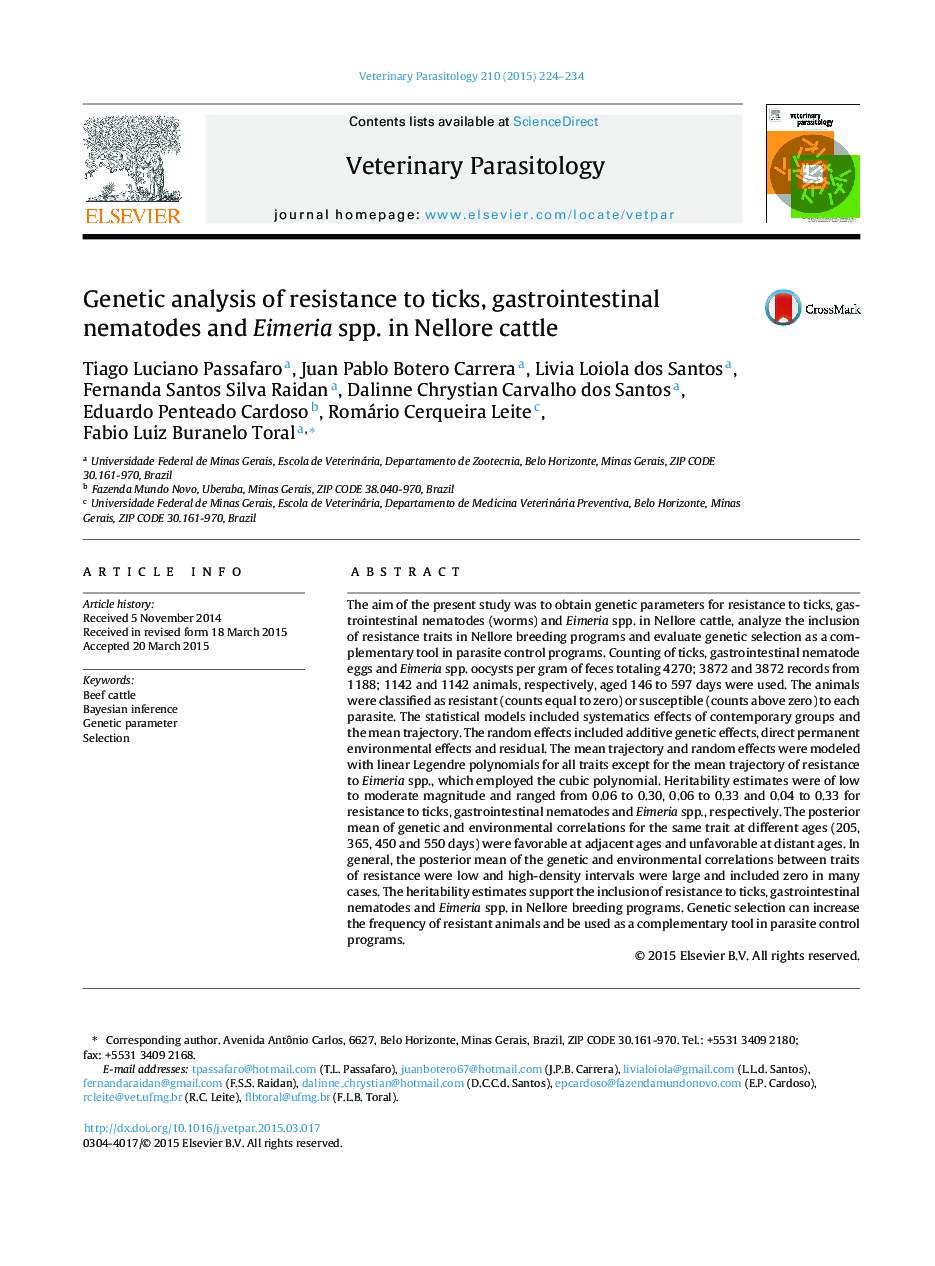| کد مقاله | کد نشریه | سال انتشار | مقاله انگلیسی | نسخه تمام متن |
|---|---|---|---|---|
| 5802465 | 1555670 | 2015 | 11 صفحه PDF | دانلود رایگان |

- Genetic parameters for resistance to tick, worms and Eimeria spp. were estimated.
- Resistance traits can be included in Nellore breeding program.
- Genetic selection for worms lead to indirect genetic gain for Eimeria spp.
- Selection for resistance may be a complementary tool to assist parasite control.
The aim of the present study was to obtain genetic parameters for resistance to ticks, gastrointestinal nematodes (worms) and Eimeria spp. in Nellore cattle, analyze the inclusion of resistance traits in Nellore breeding programs and evaluate genetic selection as a complementary tool in parasite control programs. Counting of ticks, gastrointestinal nematode eggs and Eimeria spp. oocysts per gram of feces totaling 4270; 3872 and 3872 records from 1188; 1142 and 1142 animals, respectively, aged 146 to 597 days were used. The animals were classified as resistant (counts equal to zero) or susceptible (counts above zero) to each parasite. The statistical models included systematics effects of contemporary groups and the mean trajectory. The random effects included additive genetic effects, direct permanent environmental effects and residual. The mean trajectory and random effects were modeled with linear Legendre polynomials for all traits except for the mean trajectory of resistance to Eimeria spp., which employed the cubic polynomial. Heritability estimates were of low to moderate magnitude and ranged from 0.06 to 0.30, 0.06 to 0.33 and 0.04 to 0.33 for resistance to ticks, gastrointestinal nematodes and Eimeria spp., respectively. The posterior mean of genetic and environmental correlations for the same trait at different ages (205, 365, 450 and 550 days) were favorable at adjacent ages and unfavorable at distant ages. In general, the posterior mean of the genetic and environmental correlations between traits of resistance were low and high-density intervals were large and included zero in many cases. The heritability estimates support the inclusion of resistance to ticks, gastrointestinal nematodes and Eimeria spp. in Nellore breeding programs. Genetic selection can increase the frequency of resistant animals and be used as a complementary tool in parasite control programs.
Journal: Veterinary Parasitology - Volume 210, Issues 3â4, 15 June 2015, Pages 224-234